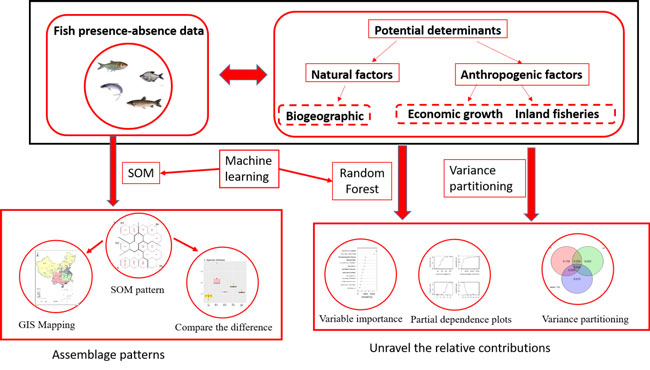
Newsroom
Biogeographic Freshwater Fish Pattern in China is Revealed
Natural and human factors play vital roles in shaping freshwater fish assemblage patterns. Therefore, analyzing how these factors affecting biological patterns could aid ecologists and conservation biologists in protecting aquatic biodiversity. However, main drivers that affect fish diversity and assemblage composition are still unclear in rapidly developing countries like China.
Recently, Professor CHEN Yushun and his team from Institute of Hydrobiology (IHB) of the Chinese Academy of Sciences in Wuhan, along with international collaborators from France, Germany, and United States, quantified the impacts of both natural and human factors and their relative contributions on freshwater fish assemblage patterns in China. The results were published in Fish and Fisheries.
The study analyzed 908 freshwater fish species and 13 environmental factors with machine learning algorithms. Study results showed biogeographic drivers were dominate variables in shaping fish assemblage patterns in China and remained stronger predictors when compared to human drivers. Precipitation, air temperature, aquaculture and capture fishery production, and surface water area had positive while urbanization had negative impacts on fish species richness.
These findings filled the knowledge gap of identifying the main drivers and quantifying their relative contributions on freshwater fish diversity changes in China. The study suggested that both natural (e.g. climate change) and human factors (e.g. urbanization, inland fisheries) should be considered when establishing future aquatic conservation strategies and priorities.

Fig. 1 A general flowchart framework on the methodology in the study. (Figure by IHB)